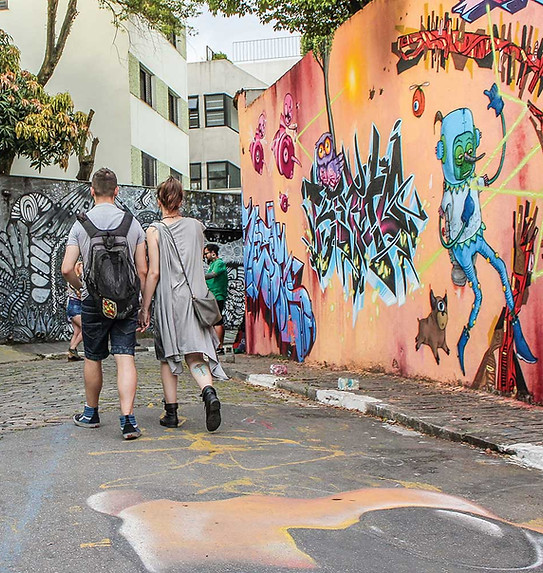/BRINGING BACK SCV BIODIVERSITY
Community Garden
_edited.png)
/OUR STORY
Every city or town has a community garden, a place where their residents come together to rewind and tend to their plants. A beautiful tradition that celebrates the community and beautifies their town. Santa Clarita needs something like this, a tradition that brings our separate lives together as a community. Therefore, we decided that we needed to create a sustainable community garden. California brings in many foreign plants, which usually become invasive species, to beautify our towns and cities. These plants can be so detrimental to the environment. We need to start to appreciate how beautiful native Californian plants are and use them instead to beautify our towns. Our community garden will include some beautiful native plants to keep our garden sustainable and beautiful. Furthermore, the Netherlands and their amazing advancements in indoor farming in order to not only conserve water and neglect the pesticides, but also produce enough food to sustain their entire country (with even a surplus). This is the future of agriculture. The Netherlands inspired the idea of having our own indoor garden to promote sustainability in Santa Clarita.
LANDSCAPE ARCHITECTURE
ENVIROMENTAL DESIGN
/TOAST
-
racism, blue lives matter amongst the nurseries in Santa Clarita??? green thumb, macclays, green living
-
what does sustainability mean to these white "environmentalists"
-
lack of education on indigenous plants. not planting to look pretty. what works here on Santa Clarita soil.
-
Our world is shifting to more sustainable initiatives, especially when it comes to agriculture. Although our suburb already has a community garden, none of us has never even heard of it until now! We want to expand the notion, bring our community together by educating our residents of native plants and new technologies in indoor farming and allowing them to contribute to our sustainability efforts. Since the Santa Clara River has dried, the native plants and animals that depended on the river have gone. The river is so important to the history of Santa Clarita and with an interactive community garden, we can educate future generations of our history.
/TRANSPERANCY
/OPPURTUNITY
After seeing Netherland's agricultural success in indoor farming by using hydroponics, aquaponics, and vertical farming, we were inspired to create and experiment with these technologies to educate others and provide a sustainable approach to producing fresh vegetables. In our indoor component, we plan to use all three techniques which reduce the use of water (thousands of gallons each year) and pesticides which are not only detrimental to the environment but also affect the food that is produced. The most exciting one is the aquaponics unit because the plants will extract their nutrients from fish and their natural waste that goes into the water. We plan to breed native fish while producing food for the general public.
For the outdoor component, we plan to use vertical and horizontal farming to farm native plants only. The indoor component will take care of all the usual produce (tomato, spinach, etc) that usually use up too much water. With indoor farming technologies, we will save water while still providing these types of produce. We reserve half of the outdoor component to the native plants which naturally saves water and will be used as a learning opportunity for our residents. The other half will be vacant lots where SCV residents can purchase their own lot and crow their own plants. We will also include a “Do It Yourself” kit to help those that want to plant their own crops. Native plants should be more available because they thrive in the California weather so they are easier to maintain and are staples to our state's history.



/ANALYSIS
-
There is already a community garden existing in Santa Clarita.
How are we different?
-
Farm to Plate ideology at the Community Center
-
Selling some of our produce as our own vendor
-
The other half is reserved for unhoused citizens in SCV
-
-
Indoor farming component (no indoor farms in SCV and are very rare)
-
saves SO much more water than the existing community gardens
-
more produce, 365 days of the year (future of farming)
-
-
using technology to our advantage (hydroponics and aquaponics)
-
Revitalizing the native plants
-

/STRATGEY
-
research technologies, natural fertilizer, native plants, and animals, etc
-
make a design plan and floor plans as well
-
render our two components and imagine what it will look like

/MOODBOARD

/TRANSFORMATION
-
There will be a community garden that is visited by the public as a way to learn and rewind, whether it be tending to their own lot in the outdoor garden and examining native plants, or exploring the indoor garden and native fish
-
it will help with research on how to one day revitalize the Santa Clara River when it comes to native plants and animals
-
The younger generation will visit on field trips to interact with our suburb's history
-
Food to Plate: community garden will have it's own vendor to sell produce as well as donate produce to unhoused community

/MATERIALS USED
-
Native Plants:
-
CottonWood- Grows more than 100 ft tall along rivers, ponds, or other bodies of water. Also survives along dry riverbeds and floodplains, places where infrequent rain creates waterways. Provides shade and soil stability, a good choice for an area prone to flooding and soil erosion. Roots are shallow and spread fast which causes damage to nearby structures.
-
Willow- Needs an area with enough moisture and direct sunlight, usually planted in places that are flooded and in need of drainage. Have strong roots, also good for preventing soil erosion.
-
Coyote Brush
-
Mugwort- Commonly found in every California country and its aerial parts are used to make essential oil. Roots made into medicine.
-
Native Fish
-
Southern Steelhead
-
Tidewater Goby
-
Indoor Crops (examples)
-
Spinach
-
Kale
-
Tomatoes
-
Lemons
-
Salad Greens


